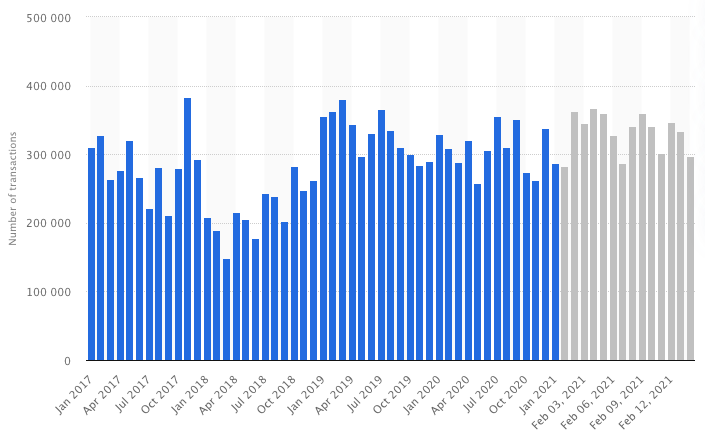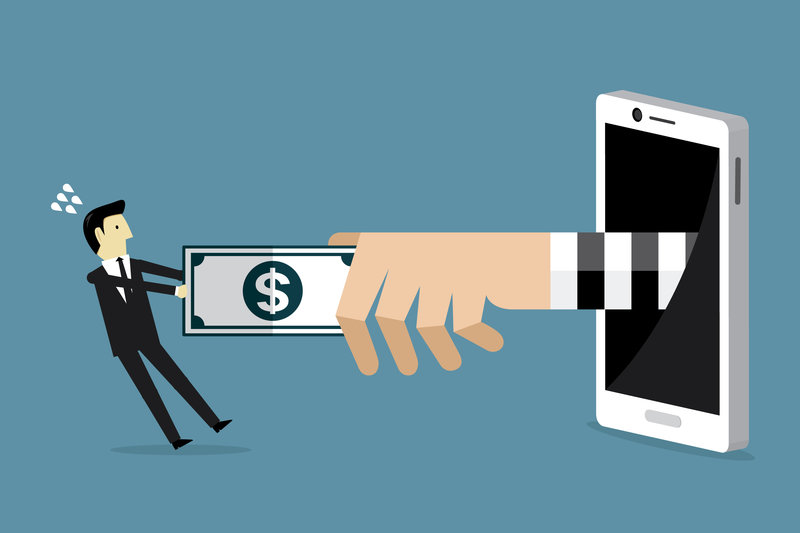Bitcoin is incredibly risky, despite the image that’s being conveyed by the media, or spread through social networks. Bitcoin’s price is manipulated to an extreme degree, to lure retail investors into buying worthless tokens with real money. We are witnessing yet another wealth transfer from people who don’t know, to insiders and scammers.
The huge operating costs that are programmed into the way the Bitcoin blockchain works are obfuscated and hidden from retail investors. The fact that Bitcoin’s price has been artificially pumped with Tethers is presented as “evidence” or “rising adoption”. Data shows that Bitcoin will crash, but shills drown facts in a stream of nonsensical statements and bullshit.
Fake markets
Bitcoin is traded mostly on unregulated exchanges. Even exchanges that claim to be regulated, like Coinbase, aren’t registered as exchanges, but simple money transmitters, a license that comes with much, much less stringent requirements and supervision than those of real securities exchanges. This makes it much easier to engage in price manipulation, for example - if not by the exchange itself, then by bad actors operating on the exchange.
Yet, to the unsophisticated investor, it all looks the same - same charts, same colours, same buttons, same language. This lends credibility to Bitcoin and to the places that trade it, and insiders abuse that credibility. Investors assume that they benefit from the same protections by regulators when they’re buying Bitcoin on Coinbase, as when they’re buying stocks on Robinhood, but this is not true.
Ironically, the regulations that govern securities exchanges today, were crafted after widespread fraud and manipulation during the Roaring Twenties that led to the crash of 1929, and to the adoption of the Securities Exchange Act of 1934. Crypto exchanges have positioned themselves in such a way that they don’t have to comply with this piece of regulation, yet benefit from the confidence that the Act has built into the investors’ psyche over the years. They’re not as much “disrupting finance”, as replicating century-old scams by avoiding regulation.
Evidence of extreme Bitcoin price manipulation is everywhere. Bitcoin is being manipulated upwards to entice people to buy it, enabling insiders to sell it for real money. Just as in 2013, when the Willy Bot pushed Bitcoin past $1,000 and enticed millions to buy, only to discover a few months later that all their Bitcoins were gone.
Illusion of success
Bitcoin’s rising price is presented as proof that Bitcoin is somehow successful and that its adoption is rising. Yet its number of on-chain transactions, the true indicator of its activity and adoption, hasn’t moved since 2017:

Six years ago, Tim Berners Lee, the “father of the Internet”, was already lamenting that Bitcoin was getting ahead of itself, and that absent an exponential rise in transactions, its price wasn’t justified. Since then, transactions have barely tripled, while Bitcoin’s price has gone up a hundredfold.
Over the last year alone, Bitcoin has gone up tenfold. The official reason, spread through relentless messaging on social networks and mainstream media outlets like CNBC, Bloomberg and Reuters, is that “corporations are buying”, as illustrated by MicroStrategy’s and Tesla’s purchases of a combined 115,000 Bitcoins. In reality, this is but a drop in the ocean. Over the period, Tether has printed almost $30 billion worth of USDT, which were used to take over 1,200,000 Bitcoins off the market, pumping Bitcoin’s price to all time highs. Yup - the largest holder of Bitcoin isn’t Tesla, it’s a shady corporation registered in Hong Kong without an office, with banking in the Bahamas, and they’ve acquired $60 billion worth of Bitcoin without spending a single cent of real money.
For every transaction, there’s a buyer, and a seller. You keep hearing about all these institutions that are supposedly buying. Ask yourself - who is selling? Why aren’t we talking about these guys?
A money pit
Bitcoin is incredibly expensive to maintain. It requires tens of billions of dollars of new inflows per year, to be spent on computers and electricity. Those costs are paid for by people buying newly issued Bitcoin. If people stop buying those new Bitcoins, the network collapses, along with Bitcoin’s price. No mainstream media outlet is talking about this, yet this objective truth dooms Bitcoin to fail over the long run, as it’s programmed to be a money losing operation into perpetuity.
Regulatory action could kill Bitcoin in a second. Bitcoin shills regularly state that “governments can’t ban Bitcoin”, which is true - but neither can governments ban poker. What governments can do, however, is ban the banks from allowing their customers to wire money to places where you can buy Bitcoin. What will your Bitcoins be worth the day you can’t sell them? Multiple pieces of legislation are in the works today, and each one of them would send Bitcoin plunging, and the whole ecosystem flying into pieces.
We’re already seeing this, in places like Nigeria. If your first thought was “Nigeria? Lol”, know that Nigeria has the highest penetration for cryptocurrencies in the world as a percentage of population, and is only second to the United States in absolute terms. India is about to ban cryptocurrencies as well; in the wake of these breaking news, Bitcoin’s price hasn’t budget by a single yota - because it’s manipulated. As a matter of fact, the worse the news, the higher Bitcoin goes, as scammers want to reassure potential investors that everything is fine, and try to extract as much cash as possible from them before time runs out.
You know who knows this? Smart money. Bitcoin derivatives are pricing in an extreme risk of sudden collapse. The prices of those derivatives can’t be manipulated, because they’re trading on real exchanges like the CME, and you have to put real money on the line if you want to play there. So they’re showing the unvarnished truth.
For now, unsophisticated retail investors are buying magic Internet beans from insiders with real money at stupid prices. The second the flow of money dwindles or starts to reverse, the ecosystem will shut down, leaving those “investors” with some numbers on a screen, and nothing else. At least you could hang your dotcom stock certificates on a wall, as a daily reminder not to play stupid games with crooked people you’ve never met.

